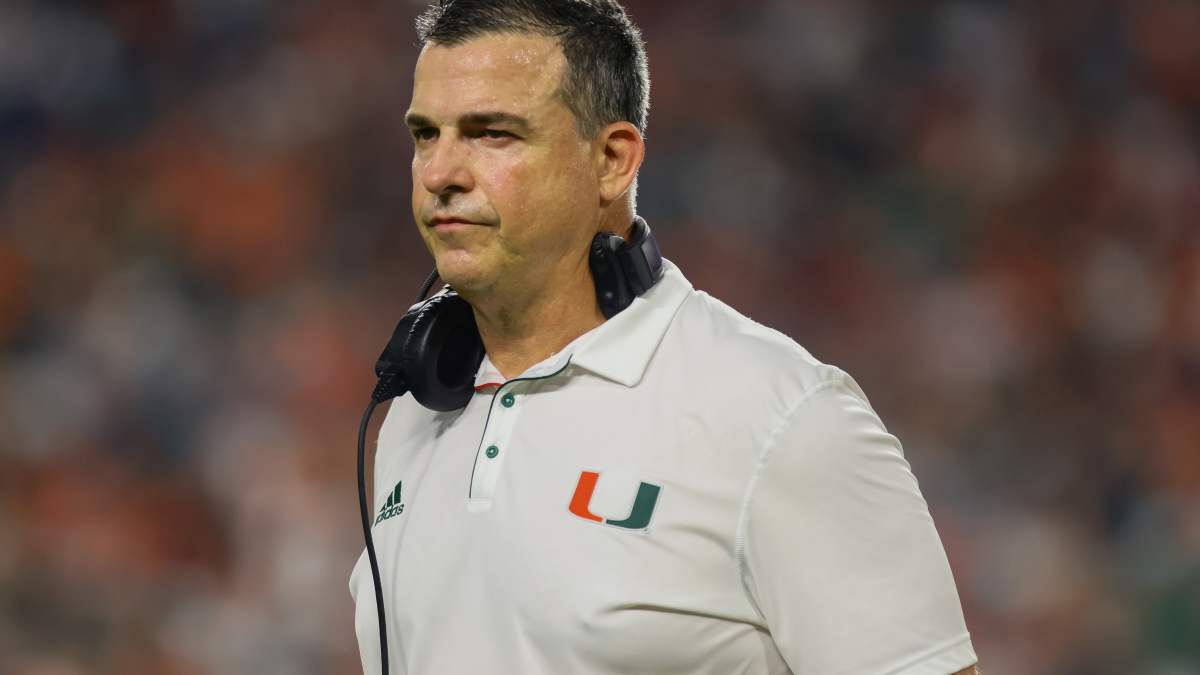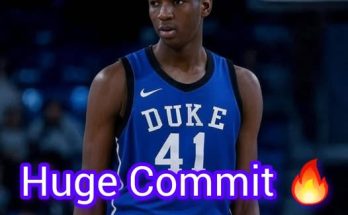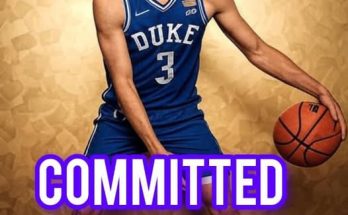The world of college football recruiting is an intense, high-stakes arena where elite high school athletes are courted by powerhouse programs with promises of opportunity, development, and sometimes, eye-popping financial incentives. Among the most captivating stories in recent memory is that of a 5-star recruit whose decision to commit to the University of Miami not only electrified fans but also involved a jaw-dropping $2 million NIL offer that made headlines across the sport. Yet, behind the headlines and public fanfare, there was a critical, defining moment—a key turning point—that ultimately shaped the recruit’s decision to choose Miami over other blue-chip programs. This turning point goes beyond money and hype, revealing much about the evolving landscape of college athletics and the intricate personal and strategic considerations that top recruits weigh in their pursuit of greatness.
The recruit in question, a consensus top-five player nationally, was the focus of an intense recruitment battle that included numerous storied programs with rich football traditions and established pathways to the NFL. The $2 million NIL deal—an unprecedented figure for a high school prospect—captured the public’s imagination, sparking debates on the ethics, legality, and impact of such deals on amateurism in college sports. Yet, as flashy as that financial offer was, it was not the sole factor guiding the recruit’s ultimate choice. What emerged through insider interviews and behind-the-scenes reporting was a more nuanced story about trust, vision, and a shared sense of mission that forged a bond between the recruit and the Miami coaching staff.
At the heart of the turning point was a pivotal meeting with the Miami head coach and his inner circle that lasted late into the evening. It was a moment that went far beyond the typical recruiting pitch filled with highlights and slogans. Instead, it was an authentic conversation about identity, values, and the future. The recruit, while deeply appreciative of the NIL offer, expressed reservations about the culture and fit at some of the other schools courting him, particularly those where the roster was crowded with established stars or where coaching turnover was a looming concern. In Miami, the coaching staff offered not only a plan for immediate playing time but also a sense of belonging and legacy—one that resonated deeply with the recruit’s personal aspirations and family background.
This meeting was not an impromptu chat; it was the culmination of weeks of communication where Miami’s coaches showed consistency, sincerity, and a genuine commitment to the recruit’s development on and off the field. They outlined a clear path for him to become the cornerstone of their offense, to lead a resurgence of the program, and to build his brand in the vibrant Miami market with strategic NIL opportunities that aligned with his values. Importantly, the coaching staff emphasized their role as mentors and guides, ready to help navigate the complexities of balancing athletic success, personal growth, and financial opportunities in a changing NCAA landscape.
What made this turning point so impactful was the recruit’s ability to see beyond the surface and grasp the bigger picture. While the $2 million offer was initially a major factor in attracting attention, the recruit’s family and advisors urged him to look at the long-term implications. This involved scrutinizing the coaching staff’s stability, the program’s trajectory, the quality of education, and the community’s support system. Miami’s pitch addressed these concerns head-on, offering transparency about the challenges ahead but also the immense upside of being a foundational player in a storied program eager to reclaim national prominence. The recruit recognized that Miami’s vision aligned with his own drive to be a difference-maker, both on the field and in his broader career.
Furthermore, the recruit’s decision was shaped by a personal connection forged during campus visits and time spent with current players. These moments of genuine camaraderie and mentorship gave the recruit a firsthand sense of the team’s culture—one that was inclusive, hard-working, and focused on collective success rather than individual glory. This environment contrasted with other programs where the recruit perceived a more transactional approach to NIL deals, one that might risk overshadowing team dynamics or place undue pressure on young athletes. At Miami, the recruit felt he would be part of a family, supported by coaches, teammates, and a fan base hungry for a return to glory.
Equally important was the Miami program’s commitment to community engagement and social responsibility, which resonated strongly with the recruit’s own values. The coaching staff highlighted their ongoing initiatives to give back to Miami’s diverse communities and promote positive change through football. This dimension of the program helped the recruit see that his impact could extend far beyond the gridiron, giving his platform a meaningful purpose and grounding his NIL opportunities in authenticity and responsibility. For the recruit and his family, this holistic approach was a game-changer, transforming the recruitment from a purely athletic decision into a broader life choice.
The timing of this turning point was also crucial. Occurring just days before the recruit’s official announcement, it crystallized his thoughts and resolved lingering uncertainties. While offers from other top-tier programs remained on the table, the recruit’s confidence in Miami’s vision, leadership, and support system won out decisively. His public announcement celebrated not just the financial package but the alignment of ambitions, the excitement of playing in front of passionate fans, and the pride of joining a program with a rich legacy and a promising future.
In the aftermath of the commitment, Miami’s program and fans have embraced the recruit as a symbol of renewal and hope. The $2 million NIL deal, while groundbreaking, has become a secondary story to the narrative of trust and fit that guided the decision. Analysts and recruiting experts alike have pointed to this turning point as emblematic of a shift in college sports recruiting, where money remains important but no longer the sole deciding factor. Instead, recruits increasingly prioritize holistic development, stability, and authentic relationships that support their long-term success on and off the field.
This story also underscores the evolving role of coaches and athletic programs in the NIL era. Recruiting today demands far more than selling a brand or flashing a checkbook; it requires deep listening, understanding individual motivations, and crafting personalized pathways that integrate athletic goals with educational, personal, and financial growth. Miami’s ability to deliver this comprehensive approach in a high-pressure recruiting battle signals a maturation of strategy that other programs will undoubtedly seek to emulate.
Moreover, the recruit’s choice shines a spotlight on the University of Miami’s broader ambitions in college football. After years of fluctuating success, the Hurricanes are determined to reestablish themselves as a national powerhouse. Landing a recruit of this caliber, especially amid such competition, is a statement of intent. It sends a message to future recruits, fans, and the broader college football landscape that Miami is back in the game—not only competing for talent but winning hearts and minds through a compelling vision and authentic connections.
The recruit himself is poised to benefit enormously from this decision. With the program’s promise of immediate playing time and a leading role, he will have the platform to showcase his talents on a national stage. The Miami market offers unparalleled exposure opportunities, and the NIL partnership has the potential to launch a lucrative personal brand. More importantly, the recruit’s alignment with a program that values character, growth, and community will help him develop into a well-rounded athlete prepared for the rigors of professional football and life beyond sports.
In a recruiting world often criticized for its transactional nature and focus on monetary gain, this story reminds us that at its core, recruiting remains a profoundly human process. It is about relationships, trust, and shared dreams. The key turning point in this recruit’s $2 million Miami decision reveals the power of vision and authenticity to transcend dollars and cents. It shows that for elite athletes weighing their future, the right fit, a supportive environment, and a shared sense of purpose can be the ultimate game-changer—one that sets the stage not just for a commitment, but for a career and legacy that endure.
Looking ahead, the impact of this recruit’s decision will be felt across college football. Programs will take note of the importance of cultivating genuine connections and presenting comprehensive, values-driven visions to prospective players. Recruits will increasingly demand more than just financial incentives; they will seek programs that offer stability, culture, and opportunities for meaningful growth. The NIL era, with all its complexities, is evolving toward a more balanced approach that honors both the commercial realities and the deeply personal nature of college athletics.
For the University of Miami, this recruit’s commitment is both a victory and a responsibility. It marks the beginning of a new chapter defined by renewed expectations and aspirations. The Hurricanes must now deliver on their promises, leveraging this landmark recruitment to build a team capable of competing for championships and producing NFL stars. The coaching staff’s ability to nurture this recruit’s talent and character will be closely watched and will serve as a blueprint for future successes.
the key turning point in this 5-star recruit’s $2 million Miami decision was less about the money and more about the message—a message of trust, vision, and mutual respect that resonated deeply with the recruit and his family. It was a defining moment that illustrated the changing dynamics of college football recruiting in the NIL era, highlighting the enduring importance of authentic relationships and shared goals. As college football continues to evolve, this story will stand as a powerful example of how the right fit and a compelling vision can change the course of a young athlete’s life and the fortunes of a storied program.



